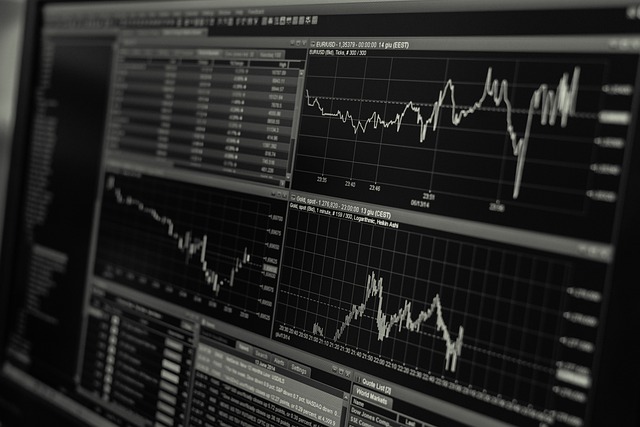The Rise of Bot Traders: Revolutionizing the Financial Landscape
Author: Jameson Richman Expert
Published On: 2024-08-25
Prepared by Jameson Richman and our team of experts with over a decade of experience in cryptocurrency and digital asset analysis. Learn more about us.
In recent years, the world of trading has witnessed a paradigm shift, with the emergence of automated trading systems, commonly known as bot traders. These algorithms are designed to execute trades on behalf of human traders, often at a speed and efficiency that far surpasses human capabilities. This article delves into the world of bot trading, examining its advantages, risks, and the future it holds in the financial industry. As we explore this fascinating subject, we will also provide personal insights on the implications of bot traders in the market.

Understanding Bot Trading
What is Bot Trading?
Bot trading involves the use of software applications that automatically execute trades based on predefined criteria. These bots analyze market data, identify patterns, and make split-second decisions without human intervention. Their ability to operate continuously, 24/7, allows them to capitalize on market opportunities that might be missed by human traders.
Types of Trading Bots
There are various types of trading bots, each designed to perform specific functions. The most common include:
- Market-making Bots: These bots provide liquidity to the market by placing buy and sell orders simultaneously, profiting from the bid-ask spread.
- Trend-following Bots: They analyze market trends and execute trades based on the momentum of price movements, buying in uptrends and selling in downtrends.
- Arbitrage Bots: These bots take advantage of price discrepancies across different exchanges, buying low on one platform and selling high on another.
- Scalping Bots: Scalping bots aim to make quick profits by executing numerous trades over short periods, capitalizing on small price changes.
- Sentiment Analysis Bots: They analyze social media and news trends to gauge market sentiment, adjusting trading strategies accordingly.
The Advantages of Bot Trading
Speed and Efficiency
One of the most significant advantages of bot trading is speed. Bots can process vast amounts of data almost instantaneously, making split-second decisions that would be impossible for human traders. This efficiency can lead to increased profitability for traders using these systems. This speed gives bot traders an edge over traditional manual trading, especially in volatile markets where timing is crucial.
Emotionless Decision Making
Human traders are often influenced by emotions, leading to irrational decision-making. Bot traders, on the other hand, operate based solely on data and algorithms. They are not affected by fear, greed, or overconfidence, which can often cloud human judgment. By removing emotions from the trading equation, bot traders provide a more disciplined and consistent approach.
Backtesting and Optimization
Trading bots can be backtested using historical data to evaluate their effectiveness before being deployed in live trading. This allows traders to optimize their strategies and ensure that the bot operates efficiently under various market conditions. This form of testing is a critical advantage, allowing users to refine their strategies before risking real capital.
Challenges and Risks of Bot Trading
Market Volatility
While bot trading can capitalize on market trends, it can also amplify risks during periods of high volatility. Sudden market swings can trigger a series of rapid-fire trades, potentially resulting in significant losses. In highly volatile markets, relying solely on bots without human oversight can be precarious.
Technical Failures
Like any technology, trading bots are not immune to technical glitches. Software bugs or connectivity issues can lead to erroneous trades, impacting traders' portfolios significantly. The reliance on technology necessitates having contingency plans in place to mitigate these risks.
Regulatory Issues
As bot trading becomes more prevalent, regulators are paying closer attention to automated trading practices. Regulatory frameworks may evolve to address concerns related to market manipulation and unfair advantages. Traders must stay informed about the legal implications of using bot traders to avoid potential liabilities.

The Future of Bot Trading
Integration with Artificial Intelligence
The future of bot trading lies in the integration of artificial intelligence (AI) and machine learning (ML). These advanced technologies can enhance bots' ability to analyze data and make predictions, allowing for even more sophisticated trading strategies. As AI continues to evolve, we can expect bot traders to become increasingly adept at navigating complex market conditions.
Increased Accessibility
The democratization of technology has made bot trading increasingly accessible to retail investors. With user-friendly platforms emerging, even those with limited trading experience can utilize automated trading strategies. This trend can potentially lead to a more diverse trading environment, but it also raises concerns about market saturation and competition.
Ethical Considerations
As bot trading becomes more prominent, ethical considerations regarding market fairness and transparency are gaining attention. There is a growing concern that sophisticated bots could create an uneven playing field, disadvantaging traditional traders. The industry will need to address these ethical dilemmas to maintain trust and integrity in the financial markets.
Getting Started with Bot Trading
Choosing the Right Bot
Selecting the appropriate trading bot is crucial for success. Traders should consider factors such as performance history, user reviews, and the robustness of the underlying algorithms. Due diligence in researching different bots can help avoid costly mistakes.
Setting Up Your Trading Strategy
Before deploying a bot, traders must establish a clear trading strategy that outlines their goals, risk tolerance, and preferred trading style. A well-defined strategy is essential for guiding the bot's trading decisions and optimizing its performance.
Monitor and Adjust
Once the bot is live, continuous monitoring is essential. Market conditions can change rapidly, and traders should be prepared to make necessary adjustments to their strategies or the bot's parameters. Maintaining a proactive approach to bot trading is vital for long-term success.
Conclusion
The lexicon of trading is undoubtedly being transformed by the advent of bot traders. The ability of these automated systems to process data, execute trades more efficiently, and remove emotional biases is reshaping the financial landscape. However, with the advantages come inherent risks that traders must be aware of. As technology continues to advance, the future of bot trading is promising, yet it carries responsibilities that require ethical considerations and regulatory frameworks.
In my opinion, while bot traders represent a revolutionary advancement in trading technology, it is crucial for traders to approach this journey with both caution and curiosity. Education, strategic planning, and ongoing diligence will be our best allies as we navigate the ever-evolving world of finance.